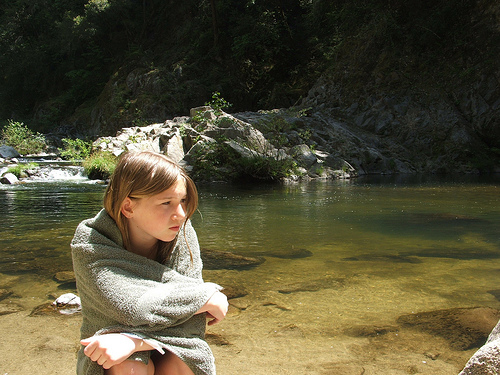What strikes me most about the poem, first, is the way the poet “verbs” the adjective innocent, using it not to describe her Eve—as in, “I am/was innocent/an innocent person”—but as a means of modifying her, as in, “He made me innocent.” This out-of-the-ordinary usage highlights, for me, the possibility of Adam as type for Christ, a man who descended from his lofty station to join his beloved in a quest for something more, for a relationship that could extend them beyond their weaknesses and failures (though Christ, obviously, has neither of these) into the interconnective realities of godhood.
But here, the poet, for whatever reason, has “no Adam,” no transcendent other to join her, to cover her failings, to “innocent” her. All she has, or thinks she has, because later she suggests otherwise, are cultural comfort foods–the “cannolis” that imply some connection with a tradition beyond and greater than her self, a connective “consolation” she’s swallowed up in even as she swallows it in her moment of loneliness; and a “damned” paradise, a green garden that’s both superlatively extraordinary and condemned—fallen out of use. And because fallen, like the poet, imperfect.
That the poet is aware of this “lack” (12) is apparent, not only in the fact that she makes this the poem’s last word (leaving us with a mouth expunged of air as, aloud, we pronounce the closing /k/ and sensually experience something of this vacuum she describes), but also in the way she “press[es her] limbs to the earth” “while God is napping” and “beg[s] the dust to fill her vacancies” (4-6). There’s a latent sexuality in this image of God sleeping and a woman seeking to have her “vacancies,” her empty spaces, filled by “dust” and “stone” (the essential elements of God’s universe), a latency representative, I think, of the potential, total connection available between male and female, human and Divine. But it’s something we can only fulfill, the poet suggests, when we realize we are “no Eden,” that we’re fallen, that death and emptiness are inherent elements of mortality, and that true, eternal connections (as suggested by her closing petition, which emphasizes the presence and reality of “God” [11] in her own rhetorical presence and reality—see, she does have an “Adam”-figure) can only come as we continually “fall from this lack” (12), humbling ourselves as we descend through mortality’s solitudes, join the dust of the earth, and learn to see, perhaps, both the complete humanity and the eternal potential of our forebears (as Adam and Eve).
Such, I think, is the ultimate effort of mortality (and, to a degree, poetry): to realize our aloneness and the potentials of human connection and to turn to God, the Transcendent Other, the only one who can really “innocent” us and draw us back into the complete, satiating connections and fulfillments to be realized in His expansive presence.

